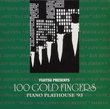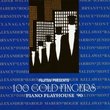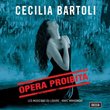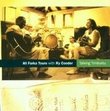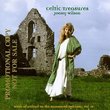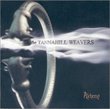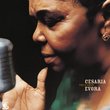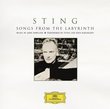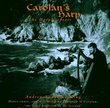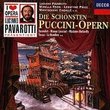| All Artists: Purcell, London Baroque Title: Purcell: Twelve Sonatas Of Three Parts / London Baroque Members Wishing: 0 Total Copies: 0 Label: Harmonia Mundi Fr. Release Date: 4/14/1998 Genre: Classical Styles: Chamber Music, Historical Periods, Baroque (c.1600-1750) Number of Discs: 1 SwapaCD Credits: 1 UPC: 794881420223 |
Search - Purcell, London Baroque :: Purcell: Twelve Sonatas Of Three Parts / London Baroque
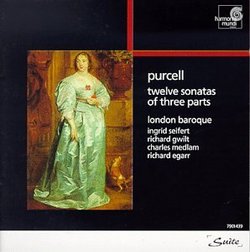 | Purcell, London Baroque Purcell: Twelve Sonatas Of Three Parts / London Baroque Genre: Classical
Henry Purcell published these proto-trio sonatas in 1683, when he was only 24. His stated aim was to bring Italian-style chamber music in the manner of Corelli to the English market. (Italian music wasn't entirely unknow... more » |
Larger Image |
CD DetailsSynopsis
Amazon.com essential recording Henry Purcell published these proto-trio sonatas in 1683, when he was only 24. His stated aim was to bring Italian-style chamber music in the manner of Corelli to the English market. (Italian music wasn't entirely unknown in England at the time, but never mind.) Each four-movement sonata is only five to seven minutes long. The music has a brisk, almost compact quality that's heightened by the tight melodic interplay between the two violin parts. The minor-key sonatas have a sober nobility that never becomes ponderous, even in slow movements; the major-key works are fleet, even joyous, without ever seeming frivolous. London Baroque plays with a combination of energy, dignity, and pleasing tone that serves Purcell well--and sometimes brings an almost involuntary smile to one's face. --Matthew Westphal Similar CDsSimilarly Requested CDs
|
CD ReviewsPassionless Purcell M. De Sapio | Alexandria, VA | 08/17/2009 (3 out of 5 stars) "These sonatas of Purcell could be some of the most interesting works in the trio sonata repertoire, but it's hard to tell from these tepid performances from London Baroque. The playing of the two violinists suffers from an unvaried bowing style and by-the-note phrasing (less swelling on every note could have helped in this regard), as well as acidic tone. These interpretations lack not only color and dynamic range but also excitement and passion. Movement endings are cut-and-dried, and sequential passages simply go through their paces; even Purcell's chromatic contortions start to sound ordinary after a while. (I suspect that the lack of dynamic range may be partly due to the recorded sound.) Having listened to London Baroque's set of the Corelli trio sonatas with great pleasure, I was disappointed to find that this Purcell disc does not rise to that standard.
" |

 Track Listings (12) - Disc #1
Track Listings (12) - Disc #1
